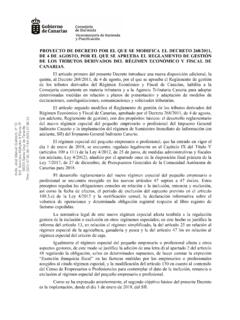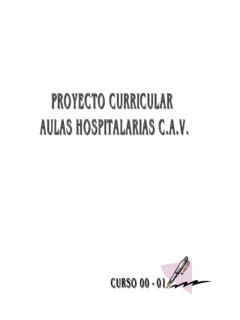Transcription of Gender-Based Violence and Livelihood Interventions
1 GUIDANCE NOTE Gender-Based Violence and Livelihood Interventions : Focus on populations of humanitarian concern in the context of HIV GUIDANCE NOTE Global issues such as deepening poverty, food insecurity and HIV and AIDS cannot be fully addressed without full and active participation of affected populations and communities, and in particular, women. This is particularly the case in the context of humanitarian crises. Although much work still needs to be done to assess the impacts of Gender$ based Violence (GBV) on agriculture and rural livelihoods , the available literature and findings indicate that the burden of Violence , notably in the humanitarian and HIV and AIDS context, falls on women, affecting their health, confidence and self$esteem as well as their capacity to provide for themselves.
2 Therefore, GBV is not only a violation of fundamental human rights, but also an obstacle to the social and economic development of communities and States, as well as to the achievement of the internationally agreed development goals, including the Millennium Development Goals. 1 The agricultural sector has an important role in preventing GBV and mitigating its impact. This Guidance Note provides an overview of the complex interactions between GBV, HIV and AIDS and rural livelihoods , based on the available literature and findings from FAO field studies in Kenya and Uganda. The studies, conducted in humanitarian settings, focused mainly on the relationships between these issues, and on identifying the appropriate Livelihood strategies to mitigate and prevent GBV, and strengthen people s resilience.
3 It also gives information on how to make Livelihood Interventions in the agricultural sector relevant to the realities of GBV and commercial sex, and thus enhance the effectiveness of the programmatic response to both food and livelihoods insecurity and GBV, in the context of humanitarian crises and HIV. 1 UNGA Resolution on Intensification of efforts to eliminate all forms of Violence against women, doc. A/RES/61/143, of 30 January 2007. Table of Contents Introduction and Purpose. 1. Key concept and terms 2. Causes and Contributing Factors linked to Agriculture 3. Consequences to the GBV and Impacts on Rural livelihoods 4. Addressing GBV through livelihoods Interventions .
4 Agricultural Sector Response Eliane Najros 3 3 3 5 11 19 26 Acronyms AIDS $ Acquired Immune Deficiency Syndrome CSO $ Civil Society Organization FAO $ Food and Agriculture Organization of the United Nations FFS $ Farmer Field School FLS $ Farmer Life School FFLS $ Farmer Field and Life School Approach GBV $ Gender$ based Violence HIV $ Human Immunodeficiency Virus IASC $ Inter$Agency Standing Committee IDP $ Internally Displaced Persons JFFLS $ Junior Farmer Field and Life School NGO $ Non$Governmental Organization OVC $ Orphaned and Vulnerable Children PHC $ Populations of Humanitarian Concern SEAGA $ Socio$Economic and Gender Analysis UNAIDS $ Joint United Nations Programme for HIV/AIDS UNFPA $ United Nations Population Fund UNHCR $ United Nations High Commissioner for Refugees WFP $ World Food Programme WHO $ World Health Organization Acknowledgments The drafting and preparation of the Guidance Note on: Gender$ based Violence and Livelihood Interventions : focus on populations of humanitarian concern in the context of HIV and AIDS involved several collaborators as well as potential users from UN agencies and national governmental and non$governmental sectors in Uganda.
5 The process began in 2006 within the framework of the UN System$wide work programme on Scaling up HIV/AIDS Services for Populations of Humanitarian Concern . The Guidance Note was drafted by Dubravka Boji Bultrini under the supervision of Carol Djeddah (Gender, Equity and Rural Employment Division, FAO). Special mention is extended to Francesca Carpano, who prepared the background document that provided valuable contributions to this note. Members of the Gender, Equity and Rural Employment Division at FAO have reviewed and provided significant inputs on previous drafts: Kirsten Mathieson and Ilaria Sisto. Other colleagues at FAO made suggestions for its structure and improvement: Eliane Najros (DIMITRA), Winfred Nalyongo, Beatrice Okello and Elvis Obbo from FAO Uganda.
6 Chen Reis, Gender and GBV emergency response and operations from Health Action in Crisis, WHO provided insightful comments and feedback. FAO also wishes to acknowledge the following individuals who participated in workshops or other discussions about the Guidance Note: Mirembe Aidah (UNHCR), Harriet Akullo (UNIFEM), Christine Amongin (TEDDO), Grace Batembya (Makerere University), Agalita Canene (International Institute for Rural Reconstruction), Simon Ecwalu (Church of Uganda/ TEDDO), Tushabe Innocent, Ministry of Gender, Labour and Social Development of Uganda (MGLSD), Ronald Kalyango (Makerere University), Sarah Larson (Lutheran World Federation), Mubarak Mabuye (MGLSD), Lydia Nabiryo (MGLSD), Brenda Ngolobe (WOUGNET), Dorothy Okello (WOUGNET), George Olima (Danish Refugee Council), Stephen Opio (ILO) and William Orongu (Church of Uganda/TEDDO).
7 Carol Djeddah INTRODUCTION AND PURPOSE Introduction Gender$ based Violence (GBV), along with poverty and HIV and AIDS, remains among the most pervasive problems confronting women across the globe, with adverse consequences for almost all sectoral areas including agriculture and labour. GBV takes many forms physical, sexual, emotional and psychological, and socio$economic. Harmful traditional practices are also considered a form of It is deeply rooted in unequal power relations and individual attitudes that condone Violence within the family, the community and the As societies change, patterns of Violence alter and new forms emerge. GBV is even more severe and widespread during a humanitarian crises, where state and community social structures are disrupted and agriculture fails to ensure food and Livelihood security of populations.
8 Such circumstances may lead individuals to engage in sexual behaviors ( sex work for food rations, safe passage and access to basic goods) that can expose them to higher risk of HIV infection. Orphaned and vulnerable children (OVCs) especially girls, and demobilized or rescued child soldiers are an especially affected group within populations of humanitarian concern, due to their lack of sources of livelihoods , knowledge and skills, and thus their dependence on others. There has recently been increased attention to the relationship between GBV, HIV and livelihoods . Gender inequality, limited access and control over land, water and other productive resources, lack of access to education and health services, food insecurity, conflict and displacement continue to fuel the vicious cycle of both GBV and HIV.
9 GBV and food insecurity also contribute directly and indirectly to people s vulnerability to HIV and their ability to cope with the infection. There are indications that as rates of HIV in a community rise, GBV increases as well. In sub$Saharan Africa, the growing number of children orphaned by AIDS is at risk of sexual exploitation. AIDS widows and orphans often lose their land and property after the death of their husbands or fathers (or both parents),4 which increases their vulnerability and may trigger further discrimination and Violence . By affecting mostly the productive population groups (age 15 to 45), GBV has a devastating impact on the agriculture sector and food security: illness (including HIV) or injuries as a result of Violence reduce work capacity, productivity and Livelihood assets.
10 Many victims and survivors of GBV are stigmatized and excluded from community and social activities, and deprived of support. Risky coping strategies such as commercial sex, employed by those facing food and Livelihood insecurity and humanitarian crises, often lead to further erosion of the Livelihood asset base, and further vulnerability to GBV and HIV transmission. This situation calls for a recognition that, first, food and Livelihood insecurity, including in humanitarian settings, can only be properly understood and addressed if GBV is factored into the analysis; and second, that Livelihood Interventions are necessary to confront underlying causes and factors related to poverty, economic inequalities and control over resources which contribute to GBV.
















